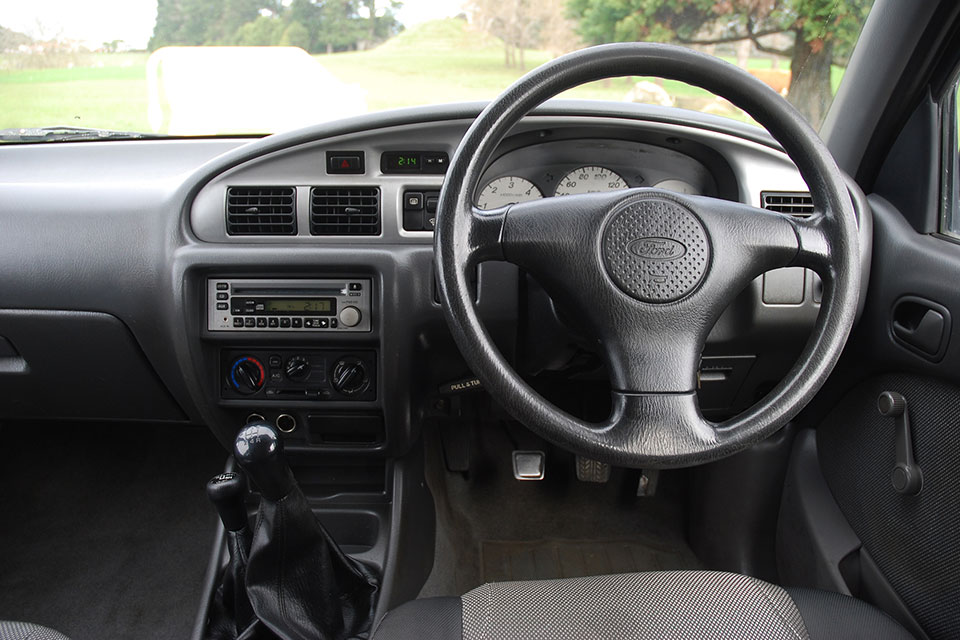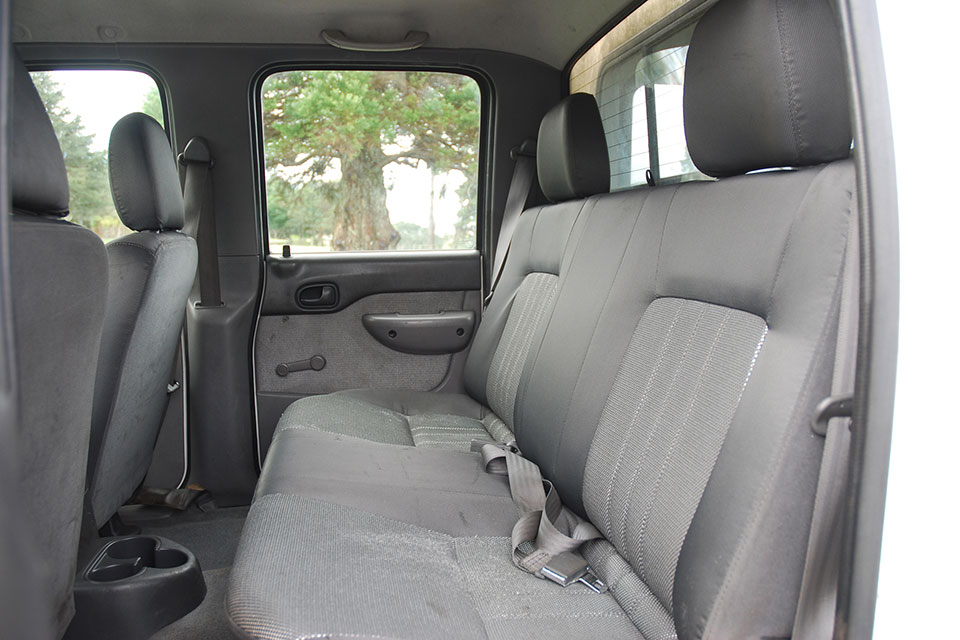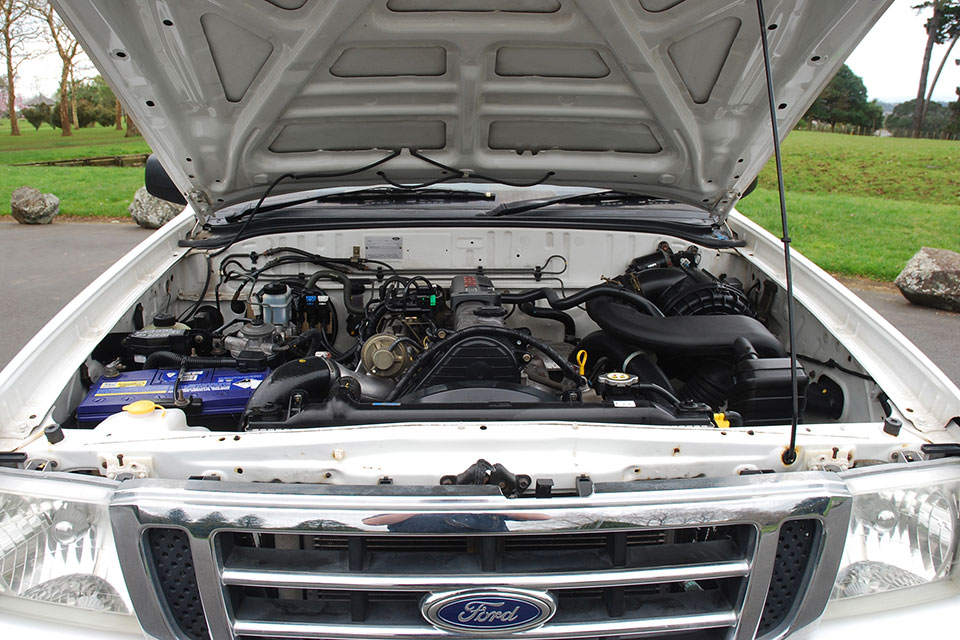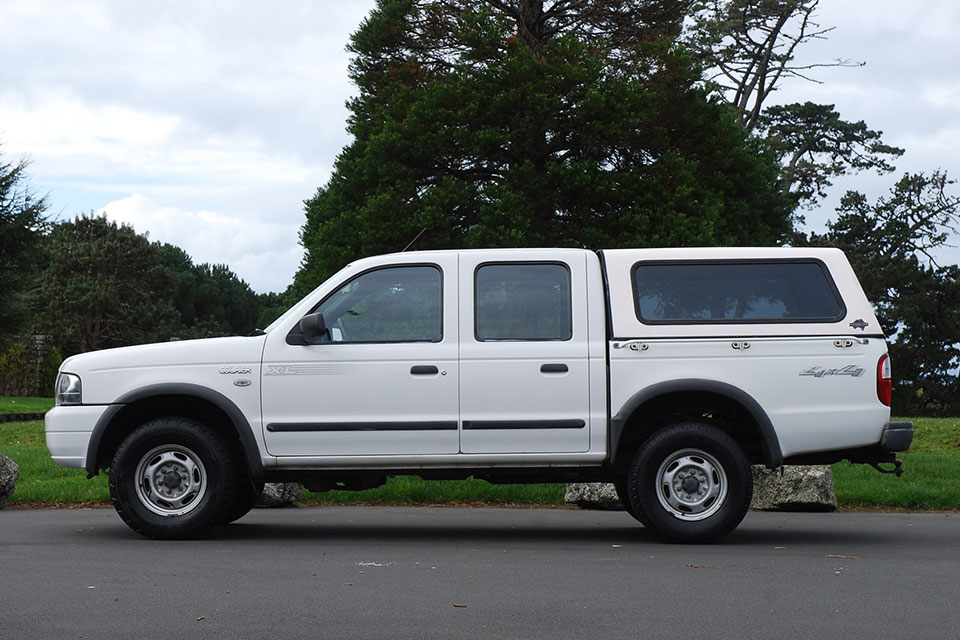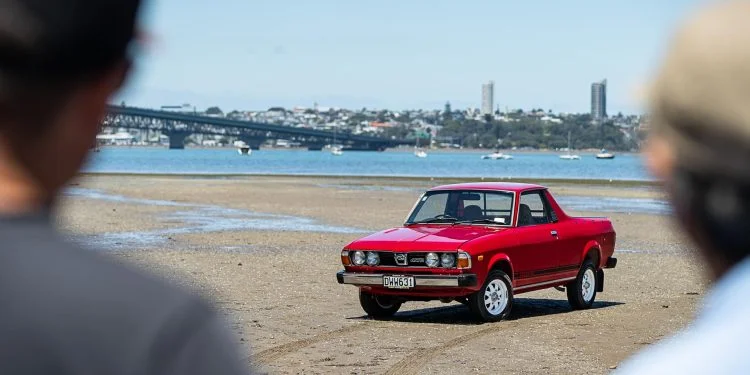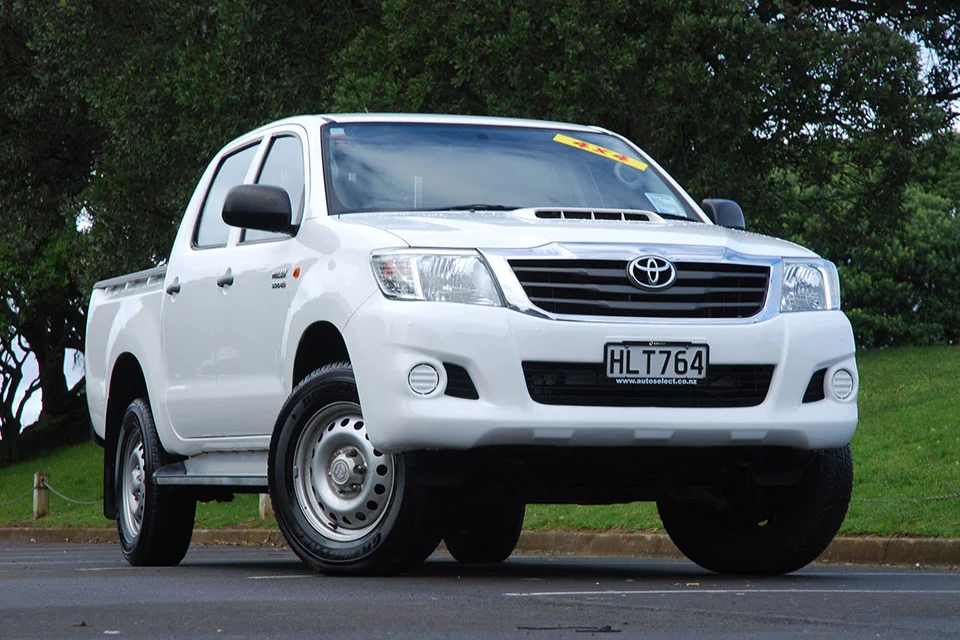Ford Courier 1998-2007 used ute review
The Ford Courier is more focused on being a workhorse than current utes.

The Ford Courier is more focused on being a workhorse than current utes. The engine is prone to overheating.
The Ford Courier sold in New Zealand was an entirely different vehicle to its American namesake. It was developed and built by Mazda - it’s almost identical to, but more common than, the Mazda B-Series. It was built to be a workhorse so has few creature comforts. Only the top-spec model receives significant safety features.
Inside and out
Our review model XL Courier is one of the last of its kind. At the front, it features a large chrome grille meant to make it look like the legendary American F150 truck. This entry-level version gets functional steel wheels and soft plastic rubbing strips down the side. The rear indicators are clear - a common way to update the look of a car at the time. The double-cab model has an aftermarket canopy fitted over the tray.
The dashboard is simple and robust with an arch and contrast grey panel sitting on the dashboard and central controls. The plastics feel low quality and picks up scratches easily. There are few features, just a basic CD player stereo and manual air-conditioning which was an option on the model. Windows are the manual, wind-up type. The centre console houses some small storage trays and the two transmission levers.
The front seats have stood up well considering the age of the vehicle. The grey fabric has not worn or torn. The seats are reasonably soft and supportive, though taller drivers will find little thigh support in the bases. They can be slid forward and backward, though not adjusted for height.
The truck feels quite narrow and the rear seats will take just two adults. Legroom is restricted and the steep angle of the seat’s backrest means they might not be comfortable for long trips.
The Courier’s tray is 1,530mm long and 1,438mm wide. Items up to 1,090mm will fit between the wheel arches, which are relatively small compared to other utes. Our vehicle is also fitted with a tray liner - if your ute does not have a liner then we recommend one for protection. They cost from $500.
On the road
Three engines were offered in the Courier. Petrol engines included a 2.6-litre four-cylinder and a rare 4-litre six-cylinder version. Most were powered by a Mazda-sourced 2.5-litre four-cylinder turbocharged diesel. For the time, it produced a competitive 86kW and 280Nm. It is a little noisy when pushed, though it provides enough power for the Courier to keep up with traffic. Transmission options included a four-speed automatic and five-speed manual.
The Courier feels quite different to modern utes to drive. It is soft and you experience a lot of body roll. The steering offers little feel and takes a lot of turn on the wheel to react. Both the shifter and clutch are smooth, although quite heavy to shift. The brakes are reasonably responsive - the XL did not get anti-lock braking as standard.
Our review vehicle is four-wheel drive, with two-wheel drive, four-wheel drive high and four-wheel drive low selected through a second transmission shifter.
A limited-slip differential is standard on four-wheel drive models, which helps with traction on slippery surfaces. On off-road tyres, the Courier is capable in most tricky conditions, although its ground clearance is only average for this type of ute.
Couriers of this age have a relatively low overall tow rating. It can pull 700kg unbraked (a medium-size garden trailer) and up to 1,800kg braked, (a small-to-medium trailer boat).
Visibility is okay from the driver's seat - the bluff front nose and square tray make it easier to work out where the corners of the car are. The aftermarket canopy, however, significantly restricts the view to the rear. If you have a canopy, we would recommend that you fit a reversing camera, never an option when the car was new. You can buy these to fit yourself from $50 or have one professionally installed from $200.
Safety
Safety features on the Courier are hard to find. The XLT model and above get anti-lock brakes and only the top XLX model gets driver and passenger airbags. Our XL review vehicle gets neither. It does, however, have a reasonable three-star Used Car Safety Rating (2003-2006) on RightCar, based on real-world crash data.
There are no ISOFIX child seat mounts in the rear, though two child seat tether points are fitted. The centre seatbelt is lap-only which does not offer as much protection as the shoulder type.
Reliability
The Courier is considered reasonably durable. The big issue now is its age. Most have had a hard-working life and are nearly worn out. Finding clean, tidy models like our review vehicle is becoming a challenge.
The diesel engine uses a cambelt which requires regular replacement. It is particularly prone to overheating, which can be caused by head gasket failure. A cracked head is the usual result. Replacement engines are tricky to find and cost from $2,500. Ensure any Courier you consider has a professional mechanical inspection and ask for a cylinder head leak-down test - this will establish the head gasket’s condition.
Unlike the cylinder head issue, replacing these is a reasonably straightforward process although it requires workshop settings because each plug is matched to a particular cylinder.
The five-speed gearbox unit shows weakness in fifth gear - the bearings fail because of the excessive load placed on them at lower revolutions. Make sure you take the Courier on a test drive at highway speed, then change into fifth gear and listen for bearing noise.
The rear differential pinion seal is another weak driveline point, although oil leaks in general from the diesel engines as they get older are to be expected. Front-wheel bearings wear out regularly, even without hard off-road use.
Check behind the cab (between the cab and the tray if the utes a flat deck example, or underneath on well side examples) for signs of chassis rust and cracking. While reasonably well rust-proofed when new, signs of corrosion weakness are starting to show in those areas of the chassis. That’s not helped by the accumulation of more than a decade’s worth of moisture and mud that is not easily cleaned off.
There are reports of cracked metal seat frames and mountings, so inspect these for any sign of movement in the seat unit itself- rock it back and forth or side to side. Make sure the forward-to-back movement of the frame runners still operates freely.
Cost of ownership
Ford recommends servicing the Courier every 12 months or 10,000km, whichever comes first. Servicing the Courier is cheap; a basic service costs $160 at a Ford dealer, with an additional $40 if the air filter needs to be changed. The cambelt needs to be replaced every 100,000km - expect a bill of up to $1,000 to do this.
RightCar estimates that over 14,000km of driving a year a four-wheel drive Courier will cost $2,920 in fuel and Road User Charges. The 70-litre fuel tank will cost $101.50 to fill at $1.45 a litre and could take you up to 640km before the fuel light comes on.
A vehicle licence for the Courier costs $183.31 a year, with the car in the cheapest ACC levy group for diesel.
Trade Me Insurance estimates insurance for a Courier valued at $13,760 will cost $49.63* per month, $3 less than a Toyota Hilux of the same year.
Buyers' guide
The Courier ranges widely in price based on its age and condition. Early high-mileage - above 250,000km - petrol models are priced from $4,500 and late-model diesel four-wheel drive models can cost up to $25,000 on Trade Me.
When buying an older diesel vehicle, check the Road User Charges are up to date and that a previous owner has not disconnected the odometer to keep their mileage down - this is fraud. Get a MotorWeb check and look for inconsistent distances travelled through the vehicle's history.
Variants
- XL - Steel wheels, wind up windows, heater, vinyl flooring and CD player stereo.
- XLT - Adds alloy wheels, anti-lock brakes, electric windows, air-conditioning and carpet flooring.
- XLX - Adds driver and passenger airbags and premium interior seats and trim.
Timeline
- 1998 Introduced in New Zealand
- 2002 Facelifted with new chrome grille - styled after the American F150
- 2004 Minor cosmetic and specification changes. Six-cylinder petrol option added
- 2007 Replaced by upgraded model and renamed Ranger
Details
2006 Ford Courier XL
$13,000 to $24,000 for models which have travelled 70,000 to 120,000km
2.5-litre four-cylinder turbocharged, 86kW/280Nm (claimed)
Five-speed manual, four-wheel drive with low-range transfer box
Three-star Used Car Safety Rating
10,000km or 12 months
Full size wheel
10.1-litres per 100km (claimed)
Diesel
4998mm
1750mm
1750mm
700kg (unbraked), 1800kg (braked)
12.6m
This review covers the Ford Courier for model years 1998, 1999, 2000, 2001, 2002, 2003, 2004, 2005, 2006 and 2007.
Review vehicle supplied by Carsino.
*Our insurance estimates are based on a 35-year-old male with no accidents in the last two years, garaging the car in Mission Bay, Auckland. The car is not used for business and will cover 10,000km to 20,000km a year. We estimate with no option add-ons and $500 excess. Customise your estimate at Trade Me Insurance.
Image gallery
Also consider
